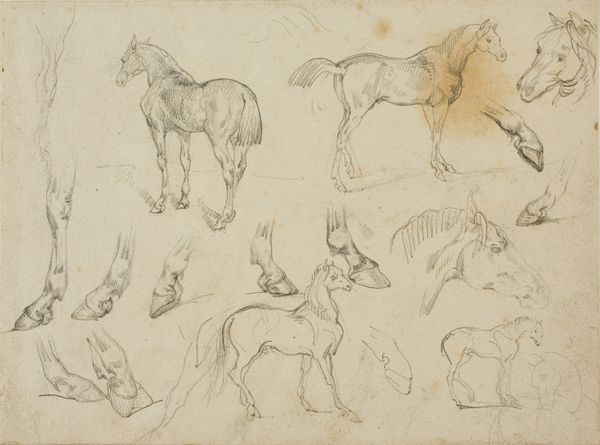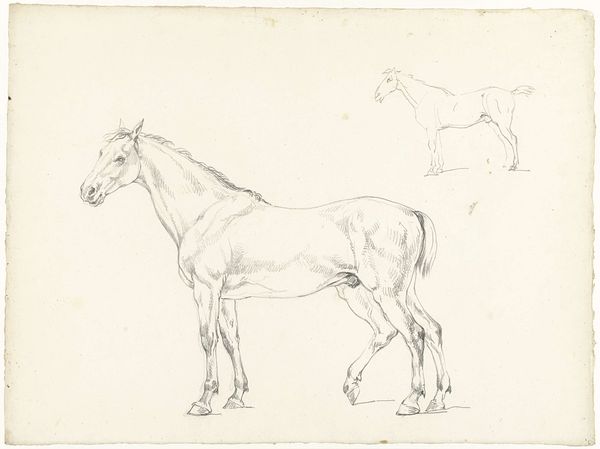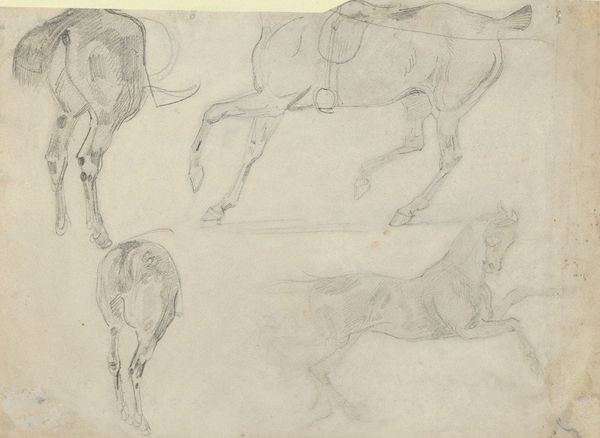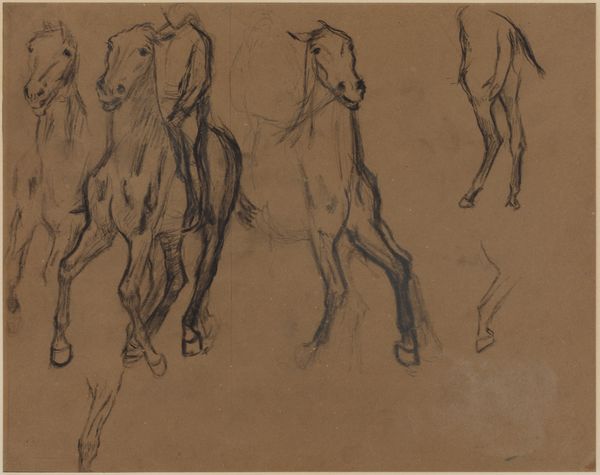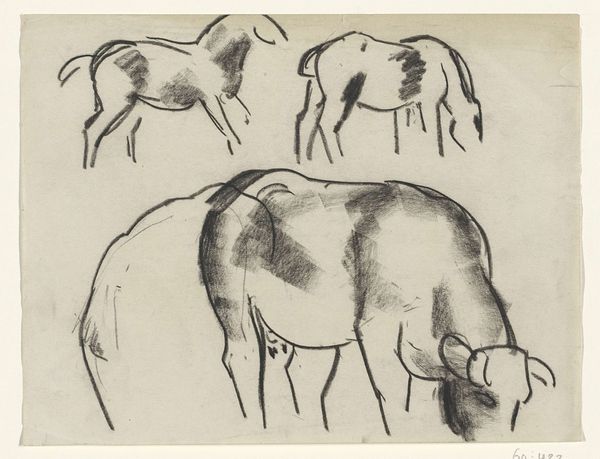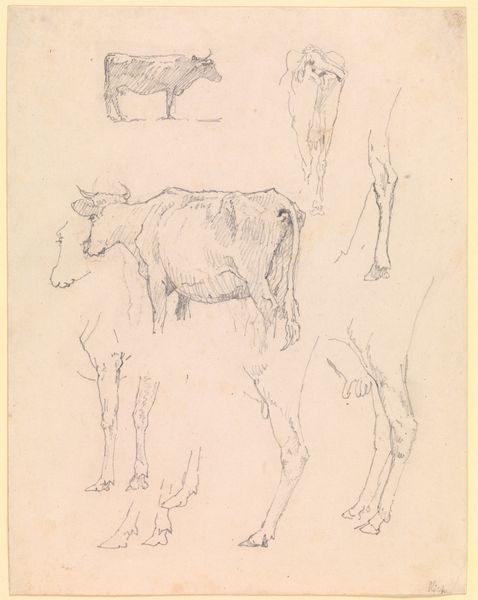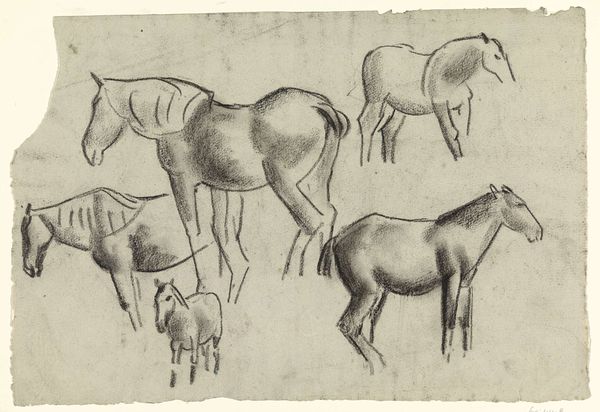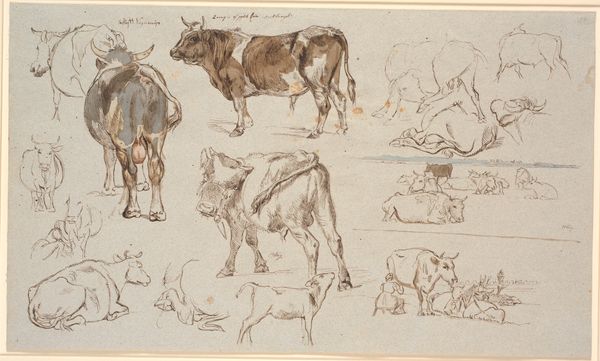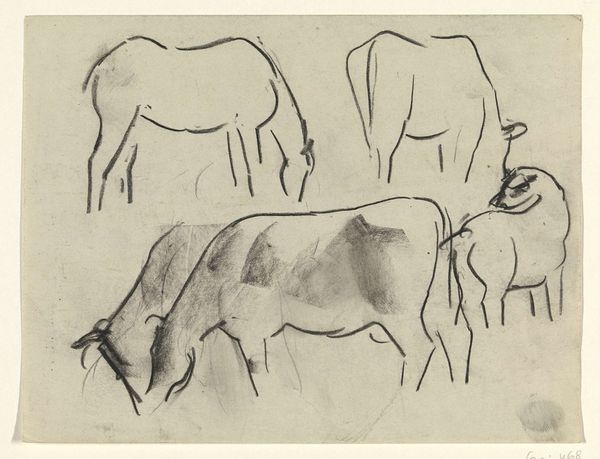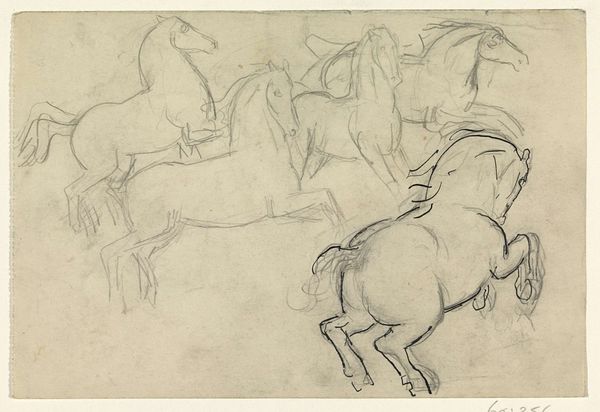
drawing, pencil, graphite
#
portrait
#
drawing
#
animal
#
landscape
#
figuration
#
romanticism
#
pencil
#
horse
#
graphite
#
history-painting
Dimensions: height 277 mm, width 436 mm
Copyright: Rijks Museum: Open Domain
Théodore Géricault made this study sheet with sketches of horses on paper. Géricault lived in France in the early 19th century, a time when the Industrial Revolution was transforming society, and the Romantic movement was influencing art. Horses were not merely pastoral features of the landscape. They were deeply embedded in the social, economic, and military structures of the time. The sketches may seem casual, but they reflect a deep understanding of equine anatomy and movement. Artists in the 19th century often emphasized meticulous observation and anatomical study. Géricault's decision to focus on horses, and his detailed attention to their form, can be seen as a commentary on their role in society. Horses were associated with wealth, power, and military might, and were essential for transportation, agriculture, and warfare. To fully understand Géricault's work, we can look at the art institutions of the time, such as the École des Beaux-Arts. The artist may have been trained in classical techniques. We must also consider the broader social context. This includes, for example, the history of equestrian art, and the ways in which horses were represented in popular culture.
Comments
No comments
Be the first to comment and join the conversation on the ultimate creative platform.
